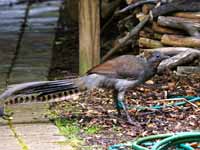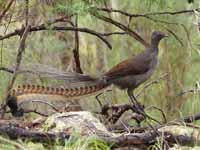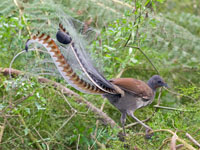The Artamidae family contains the Woodswalllows, They are found in Australasia and nearby locations. Woodswallows, as their name implies, feed mainly by catching insects on the wing. They are smooth, agile flyers with moderately large, semi-triangular wings. They can often be seen feeding just above the treetops. One sedentary species aside, they are nomads, following the best conditions for flying insects, and often roosting in large flocks.
Butcherbirds and Currawongs, both formerly of family Cracticidade, have been merged into Artamidae.
Genus Artamus
Woodswallow,_Ashy Artamus fuscus Found: Asia
Image by: 1) Dave Curtis - India 2, 3) Shrikant_Rao.Butcherbirds and Currawongs, both formerly of family Cracticidade, have been merged into Artamidae.
Genus Artamus
Woodswallow,_Ashy Artamus fuscus Found: Asia
The Ashy Woodswallow has ashy-gray upperparts, head; narrow pale band on rump; pale pinkish-gray underparts; black tail tipped with white; silvery bill. In flight the long wing looks very broad at the base giving it a very triangular outline.
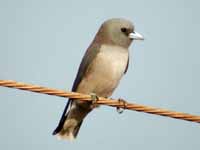
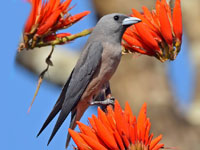
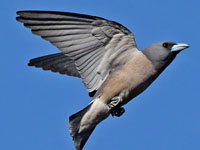
Woodswallow,_Black-faced Artamus cinereus Found: Australasia
The Black-faced Woodswallow has ash-gray upperparts; ligher underparts; black mask; blue-gray bill with black tip; silver under-wings; dark tail with white tip.
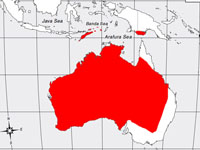
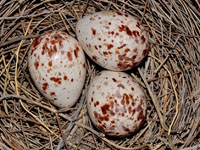
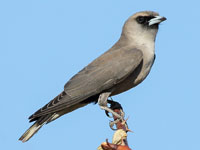
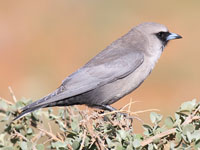
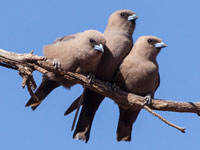
Woodswallow,_Dusky Artamus cyanopterus Found: Australia
The Dusky Woodswallow has brown upperparts, but sometimes gray; black lores.
1) Juvenile and Adult 2) Juvenile

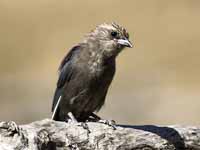
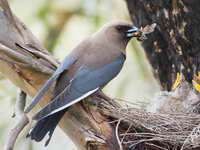

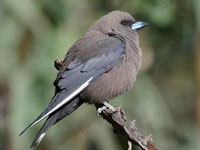
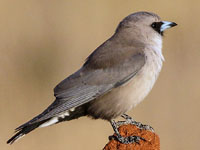
Woodswallow,_Fiji Artamus mentalis Found: Fiji
The Fiji Woodswallow has blackish upperparts; white underparts with black throat patch.

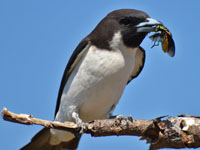
Woodswallow,_Great Artamus maximus Found; New Guinea
The great Woodswallow has black upperparts, head, throat, upper-breast; white underpart.
Image by:
1) Mark A Harper 2, 4) Jerry Oldenettel - New Guinea 3) Brendan_Ryan
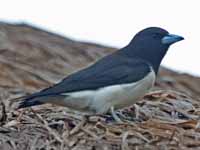
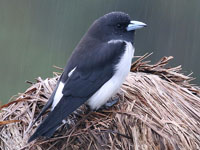
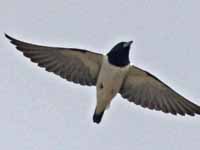
Woodswallow,_Ivory-backed Artamus monachus Found: Indonesia
Image by: 1) Joseph Smit 2) Pete_Morris - Sulawesi 3) Sam_Woods
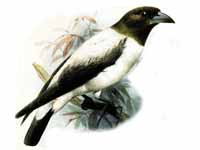
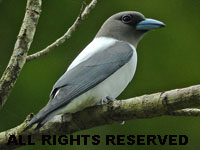
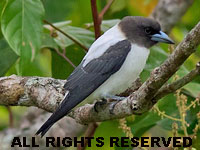
Woodswallow,_Little Artamus minor Found: Australia
The Little Woodswallow has dark smoky-brown plumage; deep gunmetal-gray wings; blue-tinged black-tipped bill. It is the littlest of the woodswalllows.
Image by: 1) Tom Tarrant 2) Laurie_Boyle 3) Jim Bendon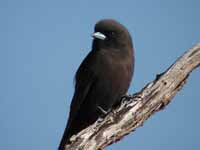
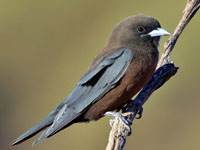
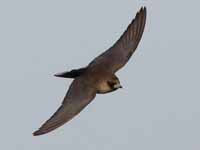
Woodswallow,_Masked Arrtamus personatus Found: Australia
The Masked Woodswallow has pale gray upperparts; black (male) or dusky (female) mask. Male has light gray underparts; female brownish-gray underparts.
Image by: 1. 2. 3) Nik Borrow 4) Laurie_Boyle1) Female 2, 3, 4) Male

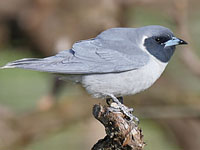
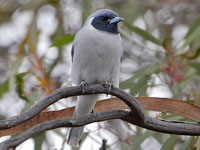
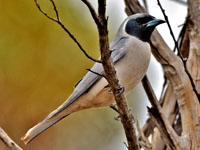
Woodswallow,_White-backed also Bismarck Woodswallow Artamus insignis Found: New Guinea
Image by: 1) Katerina_Tvardikova 2) Joseph Smit
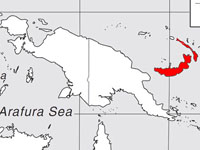
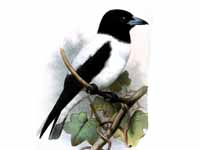
Woodswallow,_White-breasted Artamus leucorynchus Found: Australasia
The White-breasted Woodswallow has charcoal gray upperparts, head, throat; white underparts.
Image by: 1) David Cook 2, 6) Toby
Hudson -central coast of New South Wales, Australia
3) Lip
Kee Yap - Nusa Dua, Bali, Indonesia 4) JJ Harrison - Wonga, Queensland, Australia 5) Dick Daniels - San Diego Zoo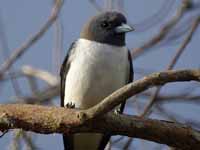
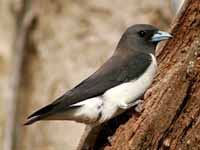
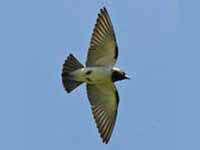
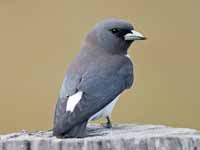

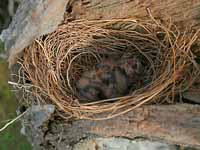
Woodswallow,_White-browed Artamus superciliosus Endemic to Australia
The White-browed Woodswallow has dark gray upperparts, head, upper-breast, white supercilium; rufous underparts.
Image by: 1) Nik_Borrow 2, 4) David Cook - Wamboin, NSW, Australia 3) Aviceda - Samsonvale Cemetery, SE Queensland, Australia1) Female 2, 3, 4) Male
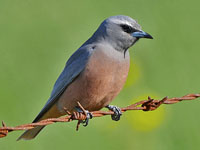
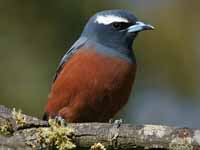

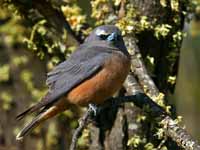
Genus Cracticus
Butcherbirds are large songbirds, being between 30 and 40 centimetres (12 and 16 in) in length. Their color ranges from black-and-white to mostly black with added gray plumage, depending on the species. They have a large, straight bill with a distinctive hook at the end which is used to skewer prey. They have high-pitched complex songs, which are used to defend their essentially year-round group territories: unlike birds of extratropical Eurasia and the Americas, both sexes sing prolifically.Butcherbirds are insect eaters for the most part, but will also feed on small lizards and other vertebrates. They get their name from their habit of impaling captured prey on a thorn, tree fork, or crevice.
Butcherbird, Black Cracticus quoyi Found: Australia
The Black Butcherbird has black plumage; gray bill with black tip.
Image by: 1, 2, 3)
Magnus Kjaergaard 4) David Cook1) Juvenile
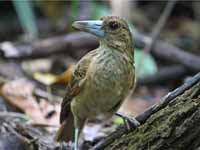
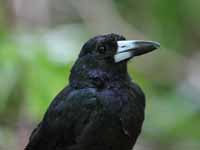
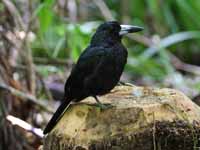
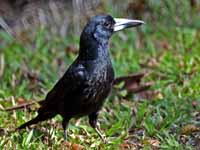
Butcherbird,_Black-backed Cracticus mentalis Found: northern Australia and southern New Guinea
The Black-backed Butcherbird has black and white upperparts; black head; white throat, underparts.
Image by: 1) Katerina_Tvardikova 2) Brian_McCauley - Northern Australia 2) Alex_Slavenko 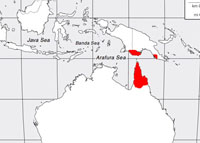

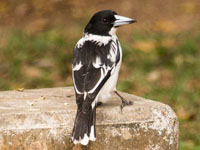
Butcherbird,_Gray Cracticus torquatus Found: Australia
The Gray Butcherbird has mostly dark gray upperparts; black head; white underparts.
Image by: 1, 2) Steve_Boyles 3) Mike Young 4) Nik Borrow 5) Swee_Oon 6) Tatiana_Gerus 7) Geoff_Whalan3) Juvenile
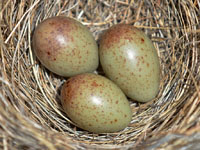
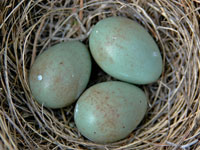
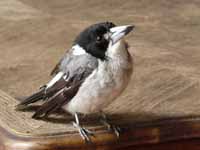
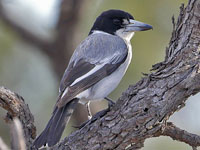
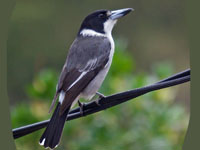
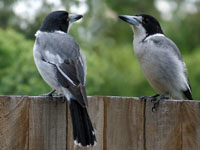
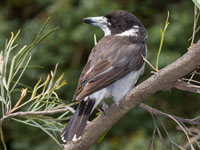
Butcherbird,_Hooded Cracticus cassicus Found: New Guinea
The Hooded Butcherbird has black head, nape, throat; white underparts, rump, back; black-and-white mantle; black tail with broad white tip; bluish-gray bill with black tip.
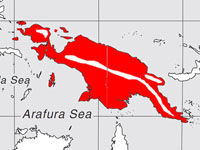
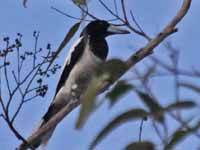
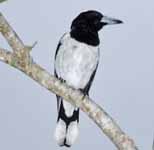
Butcherbird,_Pied Cracticus nigrogularis Found: Australia
The Pied Butcherbird has black and white plumage. Black head, nape, throat, upper-breast; white collar, lower-breast; black mantle, most of tail.
Image by: 1, 3) David Cook 2)Tony_Castro 4) Tom Tarrant 5) Vicki_Nunn 6) patrick kavanagh1, 2) Juvenile
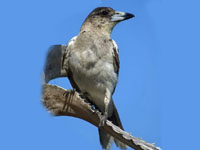
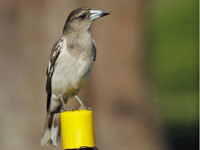
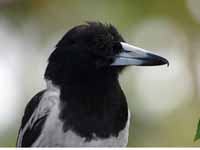
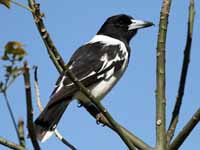
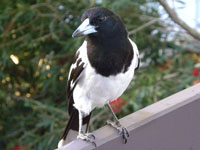

Butcherbird, Silver-backed Cracticus argenteus Found: Australia
The Silver-backed Butcherbird is almost identical to the Gray Butcherbird and is considered, by some, to be a subspecies.
Image by: 1, 2) Sunphilo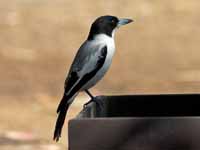
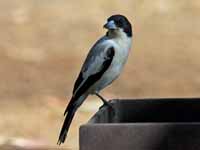
Magpie,_Australian Cracticus tibicen Found: Australia
The Australian Magpie has black and white upperparts. Male has white hind-neck, mantle; female has white hind-neck transitioning to gray mantle.
Image by: 1) KeresH 2) Charlie Westinen 3, 4) Dick Daniels 5) Arthur Chapman near Toowoomba, Queensland, Australia 6) r0002/Flagstaffotos1) Male left; female right 2) Female
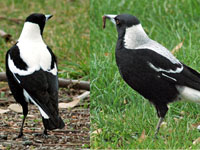
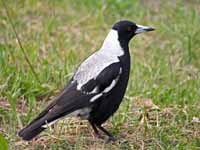

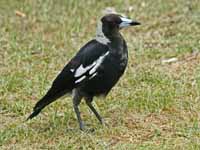

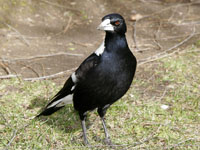
Genus Peltops
The Mountain Peltops is the larger species They both have hooked bills.
Peltops,_Lowland Peltops blainvillii Found: New Guinea
The Lowland Peltops has mainly glossy bluish-black plumage; white ear and nape patch; red rump, upper-tail base; thighs.
Image by:
1) Katerina_Tvardikova 2) John Gould 2) Greg Miles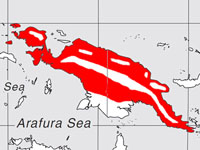
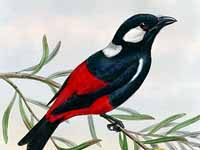
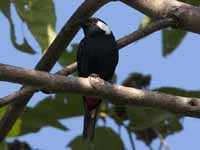
Peltops,_Mountain Peltops montanus Found: New Guinea
Similar to Lowland Peltops but less red on it and found at higher elevations.
Image by:
1) Tvardikova 2) Nik_Borrow 3) Nigel_Voaden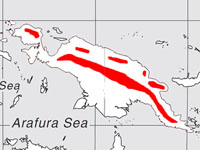

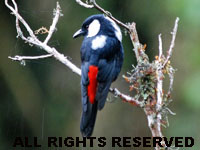
Genus Strepera
Currawongs are similar to Australian crows, magpies, and raves. They are easily distinguished by their yellow eyes, in contrast to the red eyes of a magpie and white eyes of Australian crows and ravens.
Currawong,_Black Strepera fuliginosa Found: Tasmania, Australia
The Black Currawong has mainly black plumage; some white visible in flight; heavy bill; yellow eyes.
Image by: 1) Nik_Borrow 2, 3) JJ Harrison - Tasmania, Australia 4) PsJeremy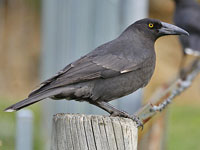
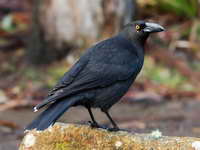
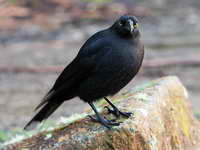
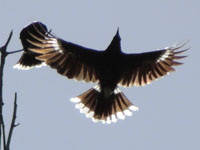
Currawong,_Gray Strepera versicolor Found: Australasia
The Gray Currawong has dark gray upperparts; lighter underparts; white under-tails; yellow eyes.
Image by: 1) Dick Daniels - Sidney, Australia 2) Nightboss54 - Canberra 3) David Cook - NSW 4) julie_burgher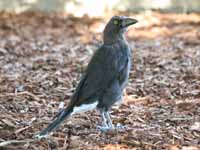
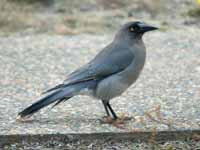
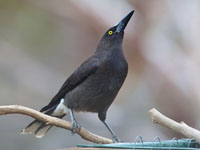
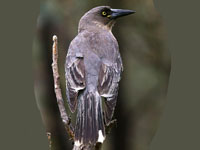
Currawong,_Pied Strepera graculina Found: Australia
The Pied Currawong has mainly black plumage; heavy black bill; yellow irises; white undertail bands; white wing patches.
Image by: 1) Alois Staudache 2, 3) Oystercatcher - New South Wales 4) D.
Gordon Robertson - New South Wales
5) Charlie Westerinen - Forester. Australia 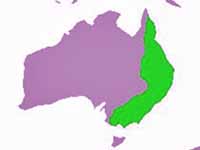
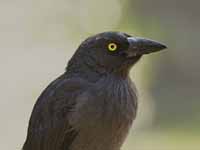
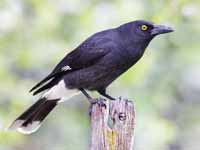
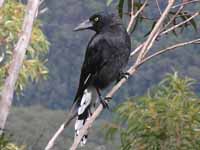
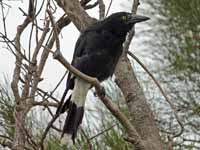
SCRUBWRENs
Order Passeriformes Family Atrichornithidae
Order Passeriformes Family Atrichornithidae
Scrubbirds are shy, secretive, ground-dwelling birds of the family Atrichornithidae. There are just two species. The scrubbird family is ancient and is understood to be most closely related to the lyrebirds, and probably also the bowerbirds and treecreepers. All four families originated with the great corvid radiation of the Australia-New Guinea region.
Genus Atrichornis
Birds of both species are about the same size as a Common Starling (roughly 20 cm long) and cryptically coloured in drab browns and blacks. They occupy dense undergrowth—the Rufous Scrubbird in temperate rain forests near the Queensland-New South Wales border, the Noisy Scrubbird in heaths and scrubby gullies in coastal Western Australia—and are adept at scuttling mouse-like under cover to avoid notice. They run fast, but their flight is feeble.
Scrub-bird, Noisy Atrichornis clamosus Found: Australia
Noisy Scrub-birds are one of Australia's rarest birds.
Image by: 1) Neville Cayley 2) Alan Danks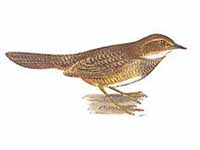
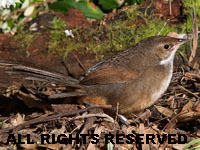
Scrub-bird, Rufous Atrichornis rufescens Found: Australia
Image by: 1) Unknown 2) E McNamara
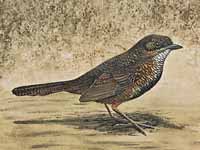
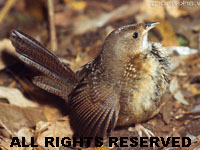
LYREBIRDs
Order Passeriformes Family Menuridae
Order Passeriformes Family Menuridae
The Lyrebird family Menuridae contains just one genus. They are so named because the male, similar to the mockingbirds of family Mimidae, will mimic noises during mating season (hence the name "liar"). Male lyrebirds have beautiful tails when they are fanned out.
Genus Menura
Lyrebird,_Albert's Menura alberti Found: Australia
The Albert's Lyrebird has mainly chestnut brown upperparts; rufous undertail, rump, throat.
Image by: 1) Tony_Castro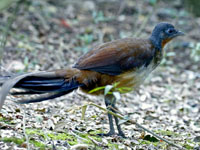
Lyrebird, Superb Menura novaehollandiae Found: Australia
Image by: 1, 2) David Cook Fir002
